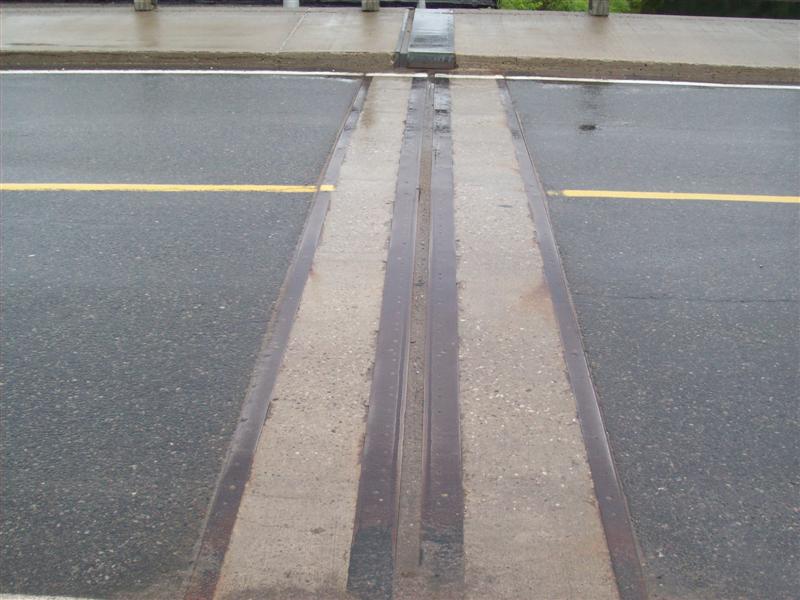Bridge expansion joint refer to a general term for various devices composed of components such as rubber and steel, which are installed at bridge expansion joints to enable vehicles to pass smoothly over the bridge deck and meet the needs deformation of the superstructure of the bridge. The main function of expansion joint devices is to meet the needs of multi-directional changes such as longitudinal, transverse, and vertical displacements of the bridge caused by factors such as temperature changes, wind effects, and vehicle loads, ensuring that vehicles can pass smoothly through the expansion joint area at the beam ends and preventing the lower beam body and supports from being eroded and damaged by water seepage at the expansion joints.

Currently, the most commonly used expansion joint devices types for highway bridges can be divided into five categories: modular expansion joint devices, steel expansion joint devices, corrugated expansion joint devices, single-joint expansion joint devices, and carbon seamless expansion joint devices. The characteristics and applications of modular expansion joint devices, steel expansion joint devices, and seamless expansion joint devices are as follows:
Modular expansion joint devices are made of integrally formed special-shaped steel and mainly consist of side beams, middle beams, sealed rubber belts, anchoring adhesives, displacement control boxes, and support beams. They are characterized by good overall performance, high bending and compressive strength, smooth passage of vehicles with low noise. They are suitable for various curved, sloped, skew, and wide bridges, as well as highway bridges with an expansion amount less than 60 mm.
Steel Expansion Joints
Steel expansion joint devices include comb-tooth plate type and laminated plate type. They are assembled with steel materials and can directly bear wheel loads; they are anchored with strong bolts and are commonly used for heavy traffic and long-span steel bridges. Steel expansion joint devices are suitable for bridges with an expansion amount of no greater than 300 mm and the frictional resistance generated by the horizontal displacement of the beam body should be limited to within 5 kN/m.
Seamless Expansion Joint
Seamless expansion joint devices are mainly composed of polymer thermoplastic elastomer mixtures. They have a smooth joint with the bridge deck, a seamless interface, simple and flexible construction, quick opening to traffic, and good waterproof performance, and can be constructed while traffic is open. They can be used for small and medium-sized bridges with a length less than 40 m and an expansion displacement less than 5 mm, and are particularly suitable for the renovation of old bridges with small-span simply supported bridges with heavy traffic in major and medium repairs.
Test Conditions: The standard test temperature is 23 °C ± 5 °C, and there should be no corrosive gases or vibration sources that affect the detection.
Test Specimens: Material specimens should be sampled according to the test requirements. The overall specimens should preferably be the expansion joint devices after overall assembly; if the test equipment limits the testing of the overall specimens, the size of the specimens should not be less than 4 m. Before the test, the specimens should be directly placed under the standard temperature of 23 °C ± 5 °C and left to stand for 24 hours to make the internal and external temperatures of the specimens consistent.
Test Methods: After installing the specimens on the equipment, apply longitudinal displacement at a speed not exceeding 1 mm/s. Under different states of transverse misalignment and vertical misalignment, make the expansion joint devices complete one maximum closure and maximum opening. With 25% of the maximum expansion amount as the step length, deform from the maximum opening to the maximum closure, and measure the deformation, displacement, and frictional resistance. Apply the maximum transverse misalignment, with 25% of the maximum expansion amount as the step length, deform from the maximum opening to the maximum closure, and measure the deformation, displacement, and frictional resistance. Reset the transverse misalignment, apply the maximum vertical misalignment, with 25% of the maximum expansion amount as the step length, deform from the maximum opening to the maximum closure, and measure the deformation, displacement, and frictional resistance. Each test method should be carried out three times, and the test results should meet the specified requirements.
Load-bearing Performance of Expansion Joint
Test Conditions: The standard test temperature is 23 °C ± 5 °C, and there should be no corrosive gases or vibration sources that affect the detection.
Test Specimens: Material specimens should be sampled according to the test requirements. The overall specimens should preferably be the expansion joint devices after overall assembly; if the test equipment limits the testing of the overall specimens, the size of the specimens should not be less than 4 m. Before the test, the specimens should be directly placed under the standard temperature of 23 °C ± 5 °C and left to stand for 24 hours to make the internal and external temperatures of the specimens consistent.
Test Steps: Fix the expansion joint devices on the test bench, move the moving platform to make the expansion joint devices in the maximum open state, and fix them; simulate the static action of wheel loads, measure the stress and vertical deflection of the expansion joint devices, simulate the fatigue action of wheel loads, measure the stress change of the expansion joint devices, and observe whether the expansion joint devices crack.
Bridge expansion joint are expansion and deformation devices installed at both ends of bridges. Their crucial functions are to meet the needs of the bridge structure's force deformation along the bridge direction under the action of vehicle loads and temperature deformation caused by temperature variations between seasons and day and night due to thermal expansion and contraction. Therefore, in addition to deformation and load-bearing performance, bridge expansion joint devices should also include inspection items that should never be ignored.

International Department: Room 2211-2212, Tower C of Wanda Plaza, Tongzhou District, Beijing 101118, China.
+86-13021287080
info@boyoun.cn